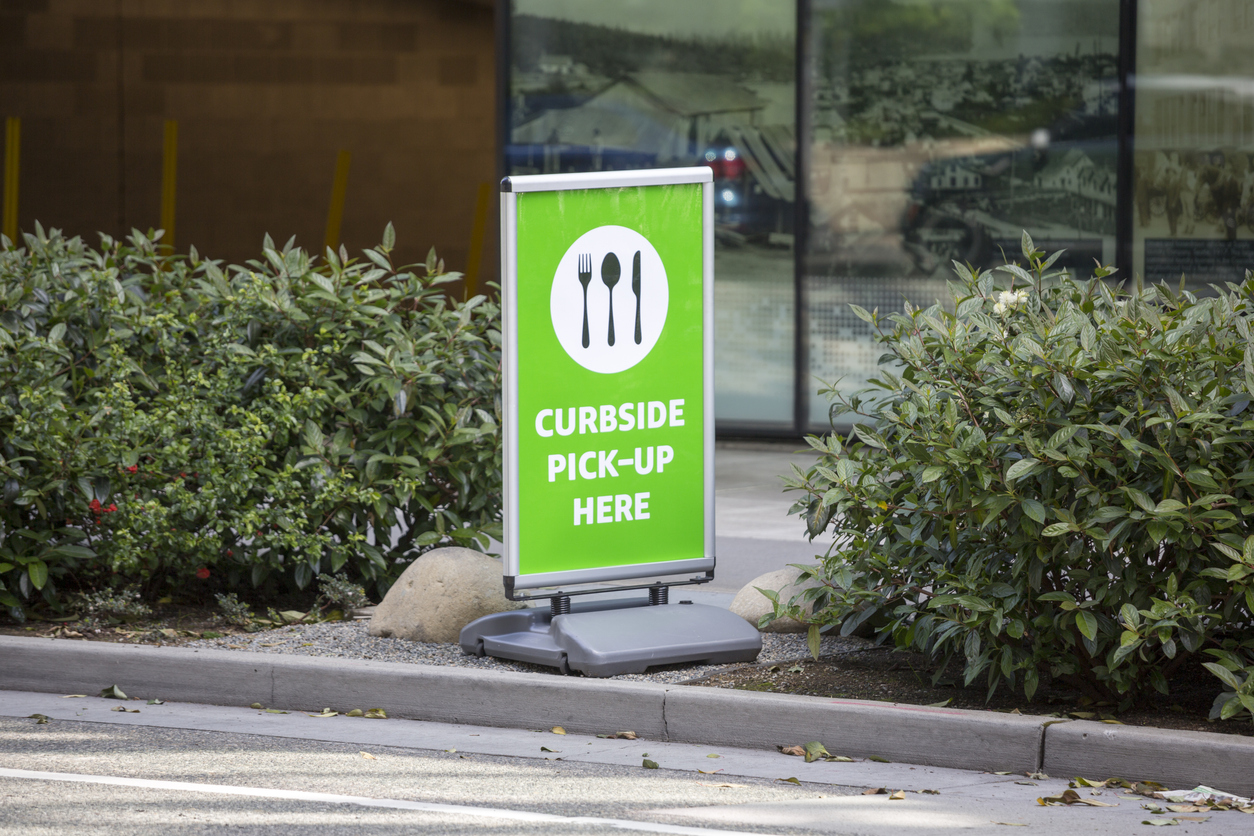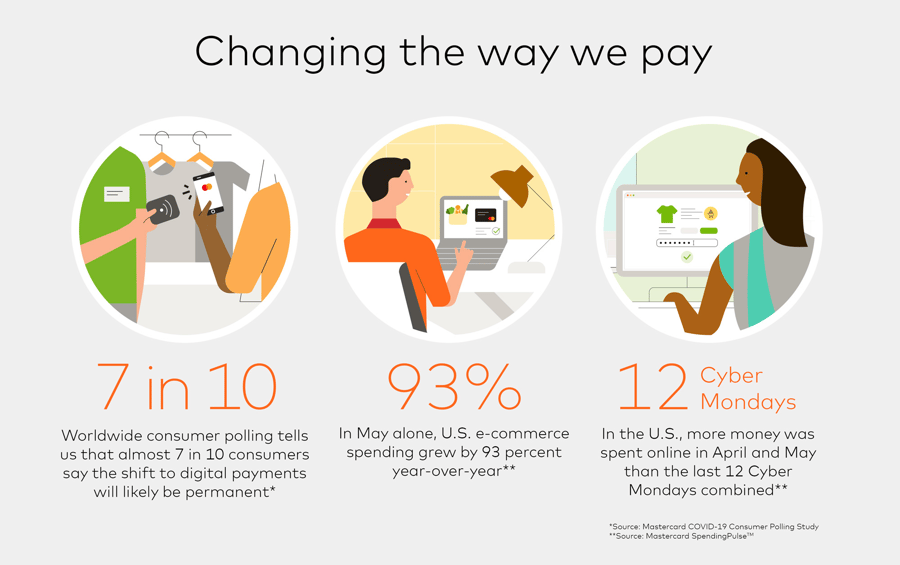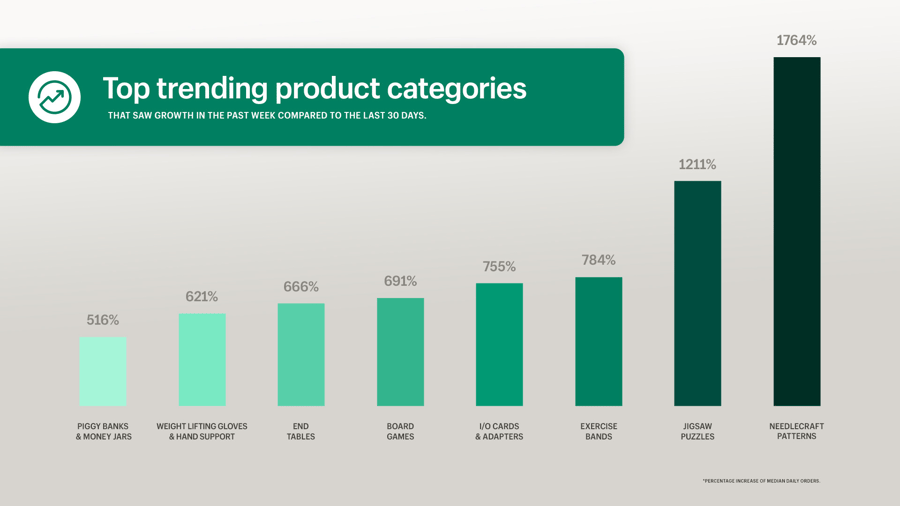
Buying products online has completely revolutionized the shopping experience. Modern-day tech means we can watch TV while scrolling through our favorite online brand’s site. All from the comfort of our sofa.
Online shoppers love to buy online and pick up the product in-store. Elasticpath suggests that this was the best part of online shopping for 40% of people.
However, as COVID struck, this has become an unsafe and almost impossible task to conquer. It is vital to keep workers and customers safe during these testing times, but that’s not to say that online shopping without home delivery needs to stop completely.
So, if we can’t go in-store to get our wares, what’s the solution?
Well, curbside pick-ups are becoming a popular solution. Retail Wire says that when questioned in April, 59% said they will now use curbside pick-up. With 75% of those saying they would continue to use it when the pandemic is over.
If you are wondering what curbside pick-up is, it’s exactly what it says on the tin. It’s the opportunity for consumers to pick up their order from the curb outside a store, allowing workers and customers to keep a safe distance from one another. Genius!
One of the great things about this is that it’s giving eCommerce firms the chance to grow again without the worry of compromising safety. What’s more, the panic of going to a shop and maintaining social distance is reduced. Something which benefits both firms and customers.
All shoppers have to do is relax, browse some sites, make an order, and swing by for the pick up.
This said, with curbside pick up being so new for retailers, there are a few things that still need to be worked out. Here are seven tips to improve eCommerce curbside pick-up operations.
1. Make Emails Stand Out
Most of us tend to get a wave of random emails every day. At some point in our busy lives, we can become a little absent-minded and put ‘useless’ emails in the junk. Or when people are practicing safe internet browsing, security sends mail to junk too.
This is why when you send an order email, you need to make it stand out. That way, a customer won’t miss the time for pick up. It also reduces the number of complaints you will receive if people aren’t there for their parcel.
You need to focus on the subject and the content of the email you are sending out.
Be as specific as you can be. It’s not enough to say: “Your order will be waiting for you sometime in the next week or two.” Of course, you don’t want to promise what you can’t deliver. But saying something like this is quite frustrating and won’t reflect well on your firm.
Instead, you could say: “Thank you for your order of XXX. We have plenty of these in stock, so please come and pick it up between 2pm and 3pm on Wednesday 21st August. It will be waiting for you outside our store on ABC street.” Don’t lie, but do give the best information you can. Because then people will know what to expect and when.
Order management software will help you to keep an eye on what products you have in stock, as well as how long they will take to distribute. It will also help you to make note of when you need to replenish products that are running low.
You might decide to skip the email altogether and contact people via SMS. Whatever you choose, keep customers informed.

Source: Mastercard Content Exchange
2. Use Location Tools to Keep People Updated
Just because a lot of people are working from home, it doesn’t mean you can expect people to drop everything and pick up their order at the drop of a hat. So, you need to let them know what’s going on with their package and when they can expect it to be ready.
Thanks to advancements in tech, there are so many ways in which e-commerce companies can do this.
First of all, you need to take advantage of the SMS marketing tools out there. ZDNet suggests 56% of consumers want higher levels of text communication with businesses. Most people check text messages within the first three minutes of receiving them, making this is the easiest way to keep customers updated with their sales.
SMS is a great way to keep people informed on where their parcel is and when to expect to pick it up.
With GPS being available to track parcels, there is no excuse to keep customers out of the loop. It’s even possible to rearrange pick-up times. This puts more power in the customer’s hand, resulting in better feedback and a higher return for you.
You can even take this opportunity to take advantage of marketing trends. Send out a quick post-purchase SMS survey.
If a cancellation needs to be made on any side, keep the customer informed with what’s going on and handle it with grace. Like with any relationship, communication is key to satisfaction.
For example, say you do not have a product in stock. Or are going to be an hour late. Or there isn’t a safe place to hand over the product - perhaps because it’s too large. Discuss with the customer what they would like to do, rather than presuming.
Otherwise, you will be known as an unthoughtful company and lose profits. Something which could have been avoided with a simple text.

Source: qeretail
3. Stage the Process
When we talk about staging, we aren’t talking about where to put the stage lights and where the drummer should sit. We are talking about it in a purchasing sense.
Staging means making sure everything works in each stage before selling. For e-commerce and curbside pickups, it means separating each step of the process from buying to delivering.
It may involve:
- Stock being kept in a warehouse or back room
- The packaging being secure and wrapped by a different member of staff
- A communication team keeping customers updated and informed
- The front of house team organizing the package for pickup. They also must ensure it gets collected by the right person.
If you are a big or small company, you can use warehouse management and train staff.
The point of it all is, however, to make sure that everything is kept separate and organized. Of course, keeping people physically separate is great for COVID. Yet, staging is all about selling and fulfillment in separate stages. It's to make sure that each step works and if there is a problem, it can be resolved quickly.
If each stage of buying and fulfillment works well, then things will run smoothly from start to end. It’s also important to have a contingency plan, so if things do go wrong, there is a back-up.
Staging also helps you to keep an eye on what needs doing and when. You can see if you need more staff in certain areas and assess the space you are using. It allows you to figure out when to get more stock and how long each stage will take. Meaning you can then relay this information onto customers.
4. Support Your Staff
It doesn’t matter if you are a small art company working in your kitchen or a huge food delivery firm; you need to support your staff. This means no pushing them to pack or deliver faster. If you set targets, make sure they are reasonable.
It also means fair wages. Paying people a low wage and then expecting them to do perfect work for you is unfair. You wouldn’t expect people to treat you like that, so don’t treat them like that. Especially when some of the fulfillment methods they’re handling are unfamiliar to them.
It may be that your staff need a little more training, which is more than okay. Or maybe you just have to tell them how to deal with products when they are being discontinued. As long as you are supporting them, it keeps them happy and makes them want to work for you.
Also, consider how staff will now be interacting with customers. When using pick-up points, try to reduce the amount of cash-in-hand interactions going on. Having a business phone service and making sure customers pay beforehand will prevent face-to-face interactions.
5. Handle Customer Complaints Well
Curbside pickups aren’t a wholly new thing. Yet, for a lot of companies, they are unfamiliar, which means mistakes are inevitably going to happen. More than likely, there will probably be a couple of complaints.
Number one, learn from these complaints. Learn from any type of feedback you get, for that matter.
Number two, it’s how you handle the complaints that matter. A quick search will help you find information on escalation management and how to give great customer service. But, as long as you are always friendly and willing to help out, the customer will be happy.
A big part of dealing with customer complaints is learning how to handle refunds. This is important in online purchases as people aren’t going to be able to see what the product is really like until they get it home.
During the pandemic, you may decide to install new rules when it comes to returns. For example, changing the 14-day return policy to a 28-day policy to give people a chance to get to a post office. When items are returned, you might also have to put them in a separate place for a few days before they are re-sold due to surface germs.
6. Follow Up Thank You Emails
It’s always nice to follow an eCommerce trend and send a thank you email to clients. It’s a great way for your company to stick in people’s heads and show them you are grateful for their purchase. It’s also a good way of getting positive feedback and showing what a good company you are.
When implementing a post-purchase email, try to personalize things. This isn’t just about adding their name in the subject line. You could point out what they missed out on and make an add-on sale.
Why not stick in an offer to entice them to shop with you again? It doesn’t have to be anything huge. Even 10% off will encourage them to check out what you have to offer. Now you have their email address, you could even send them random ‘thanks for being you’ gifts.
After all, you aren’t getting to thank customers face-to-face anymore. So, why not thank them digitally instead?

Source: Retail Touch Points
7. Be Organized from Start to End
Whether you're making sure you know where your stock is, or you're finding out where the customer has parked. You need to be organized.
Behind the scenes, an order management system will help you know what stock you have. Good staff training will assist with getting things done quickly and efficiently.
Good old-fashioned logic can then help with the rest. If a customer has come to pick up an order, make sure that it’s ready for when they arrive.
Follow these rules for a smooth operation:
- If you are meeting them somewhere, make sure you have been in contact to arrange a specific place and time. And even what they or their car looks like.
- If you are dropping something off at a pick up point outside a place you know, invest in a GPS.
- Stick to the time and date you stated. We all hate waiting around. So, if you have said you will drop off a parcel at your company car park at 5.15 pm, be there or be square.
- Always stay safe when meeting strangers.
- Make sure you have contact details.
- Keep people updated if needed.
Conclusion
Curbside pick-ups are the perfect way for companies to protect people and the economy. You could be making a delivery to an arranged pick up point, placing it outside the store, or taking part in a drive-thru. By following these seven tips, you will be able to keep on growing. While also ensuring that your staff and customers are protected.
Staying flexible and keeping the customer in mind in all you do will put you above the competition. And now, you are prepared for whatever may come your way.





Leave a reply or comment below